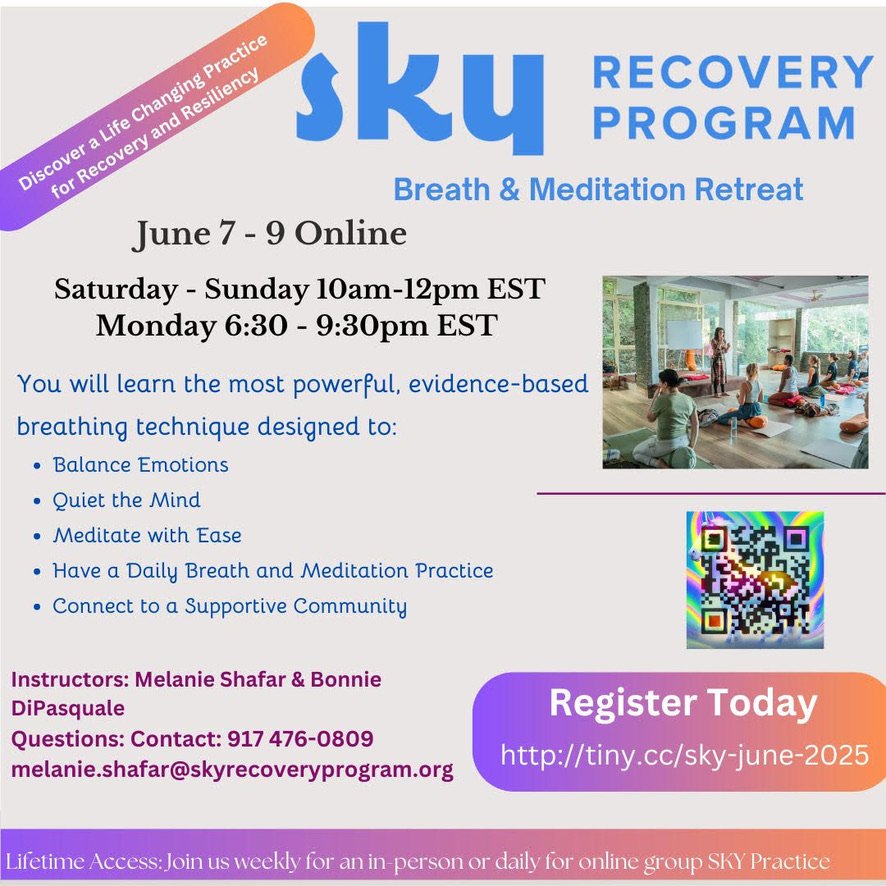Reading Time: 2 min 11 sec
I hope the next 26’ish breaths are the most nourishing of your day.
4 THOUGHTS
1. Breathing 201: The Breath-Body-Brain Link
The motions involved in breathing physically move your entire body. (Fun aside, this is why fMRI scans need to remove breathing “noise,” and part of why archers often shoot at the end of an exhale: to avoid movement.)
Your brain is constantly monitoring these bodily movements, so brain activity naturally synchronizes with each breath.
This breath-body-brain connection may help your brain coordinate movement and sensory perception (like seeing and touching) with your breathing rhythm. Thus, breathing may help your body and brain work together more smoothly.
P.S. If you want to learn how to use this knowledge for better cognitive health, check out the upcoming Breathing for Better Brain Health workshop 🧠
2. Plant Trees While You Breathe or Meditate
My good friend, Colleen Loehr, MD, recently introduced me to the Sattva meditation app. It has an awesome feature: For every 10-day streak you have, they will plant a tree.
It’s a perfect way to link our practice to something tangible (aside from the never-ending benefits we get personally).
P.S. I love Insight Timer (I have an 875-day streak my ego won’t let me let go of 😂), so I simply started running both apps during my morning practice. I’ve planted two trees so far 🌳🌳
3. Slow Breathing is to Meditation What…
“When you are already happy, there is no effort in trying to smile. But when things are slowly beginning to look a little blue, when morale is sagging at the edges and people around you are beginning to irritate you, that is the time to start smiling. In the very act of smiling there seems to be some secret switch that is turned on, and somewhere inside a little fountain of joy begins to play.”
– Eknath Easwaran, The Bhagavad Gita fro Daily Living
I’ve playfully said before that “Slow breathing is to meditation what smiling is to facial expressions.” They both work fast, but sometimes a smile is an easier place to start when irritated 😊
4. An Enjoyable Way to Reshape Your Brain This Week
“Every time you take in the good, you build a little bit of neural structure. Doing this a few times a day—for months and even years—will gradually change your brain, and how you feel and act, in far-reaching ways.”
- Rick Hanson, Ph.D., Buddha’s Brain
“Taking in the good” sounds like a perfect practice to try this week (and every week) 😊
1 Quote
“This self is not some fixed body, it’s constantly changing. Every time we take a breath we’re changing. Our consciousness is always changing, too. All the chemical and physical processes in our body are also constantly changing. And yet, everything temporarily takes a form.””
1 GOOD BOOK
The Heroic Heart by Jetsunma Tenzin Palmo
I got this book solely because it had the best title ever, lol, and I ended up absolutely loving it. This quote sums up its core message perfectly: “The important thing is not to worry about what is going to happen to us but to create inner strength to deal with whatever does happen.”
In good breath,
Nick Heath, T1D, PhD
“Breathing is the compound interest of health & wellness.”
Enjoy these posts? Donate to say thanks!
P.S. mid-year reset: let’s see where this takes me
SKY Recovery Program
My dear friend Colleen Loehr, MD, is co-teaching an online course for the SKY Recovery Program from June 7th to 9th. The course is open to anyone—people in recovery and people who have a friend or loved one with an addiction problem. The fee is only $95, so it’s an inexpensive way to learn the SKY technique for recovery and addiction. Click here to learn more about it. 🙏
The Breathing App for Diabetes
This is the first program specifically made for people with diabetes to help manage their stress through breathing and mindfulness practices. In addition to the amazing program inside the app, we have some really neat things coming up, so sign up now!
Amazon Associate Disclosure
I’ve been recommending books for almost 6 years. Yet somehow, I just discovered that I could be an Amazon affiliate [face-palm]. In any case better late than never. Now, any Amazon link you click is an affiliate link. As an Amazon Associate, I earn from qualifying purchases. So, if you’d like to support my work, buying books through these links is helpful : )
* An asterisk by a quote indicates that I listened to this book on Audible. Therefore, the quotation might not be correct, but is my best attempt at reproducing the punctuation based on the narrator’s pace, tone, and pauses.





